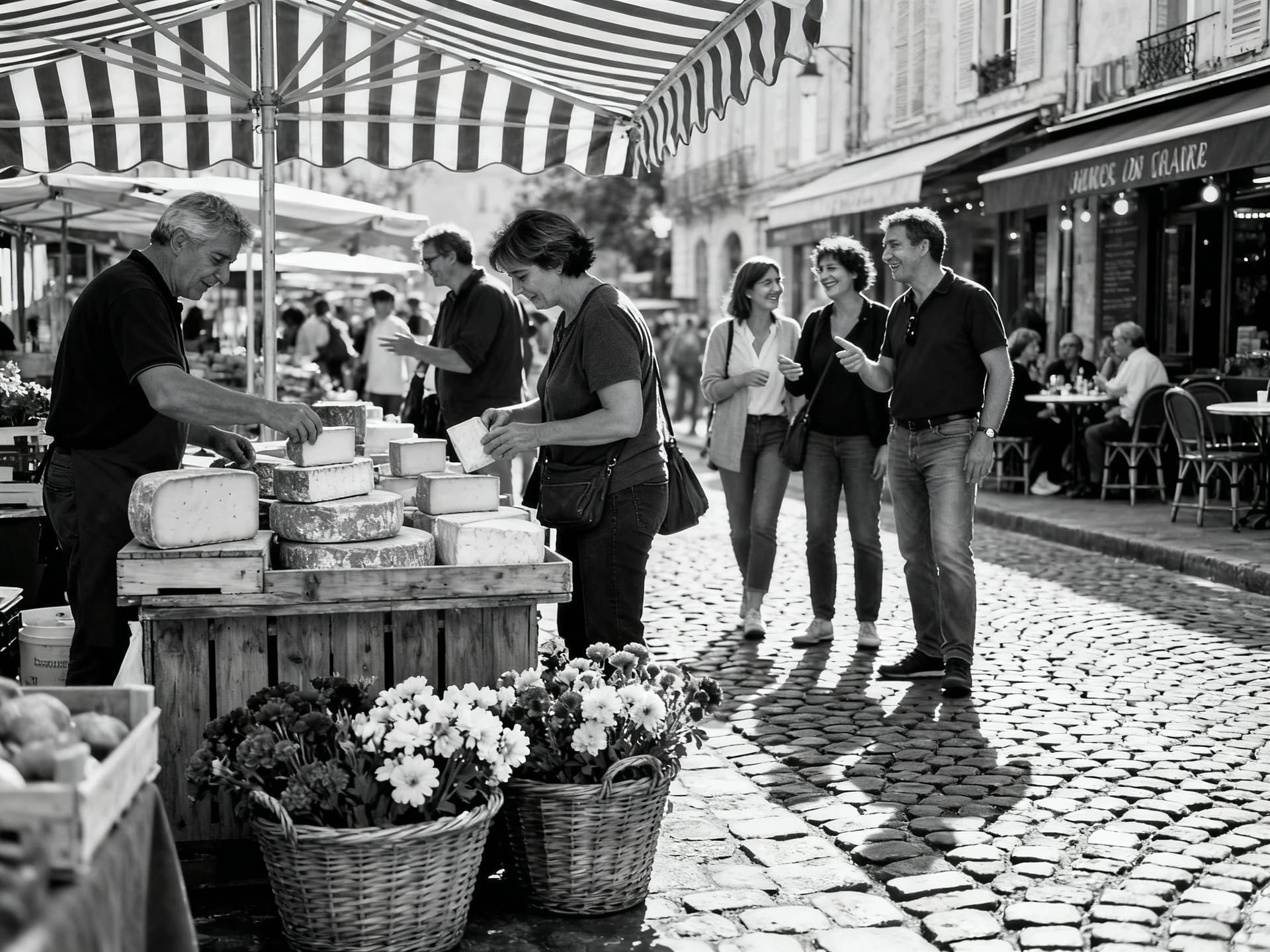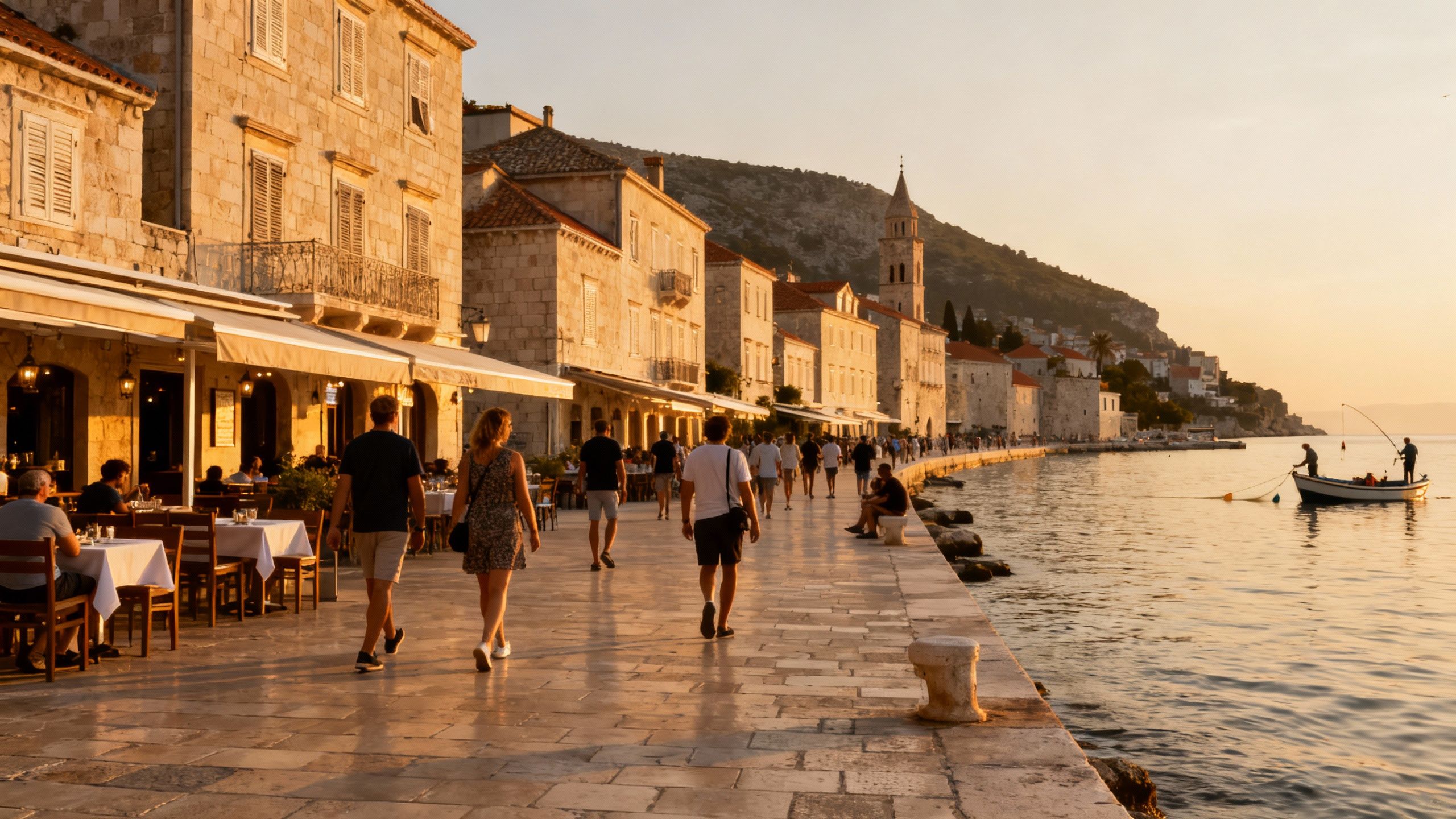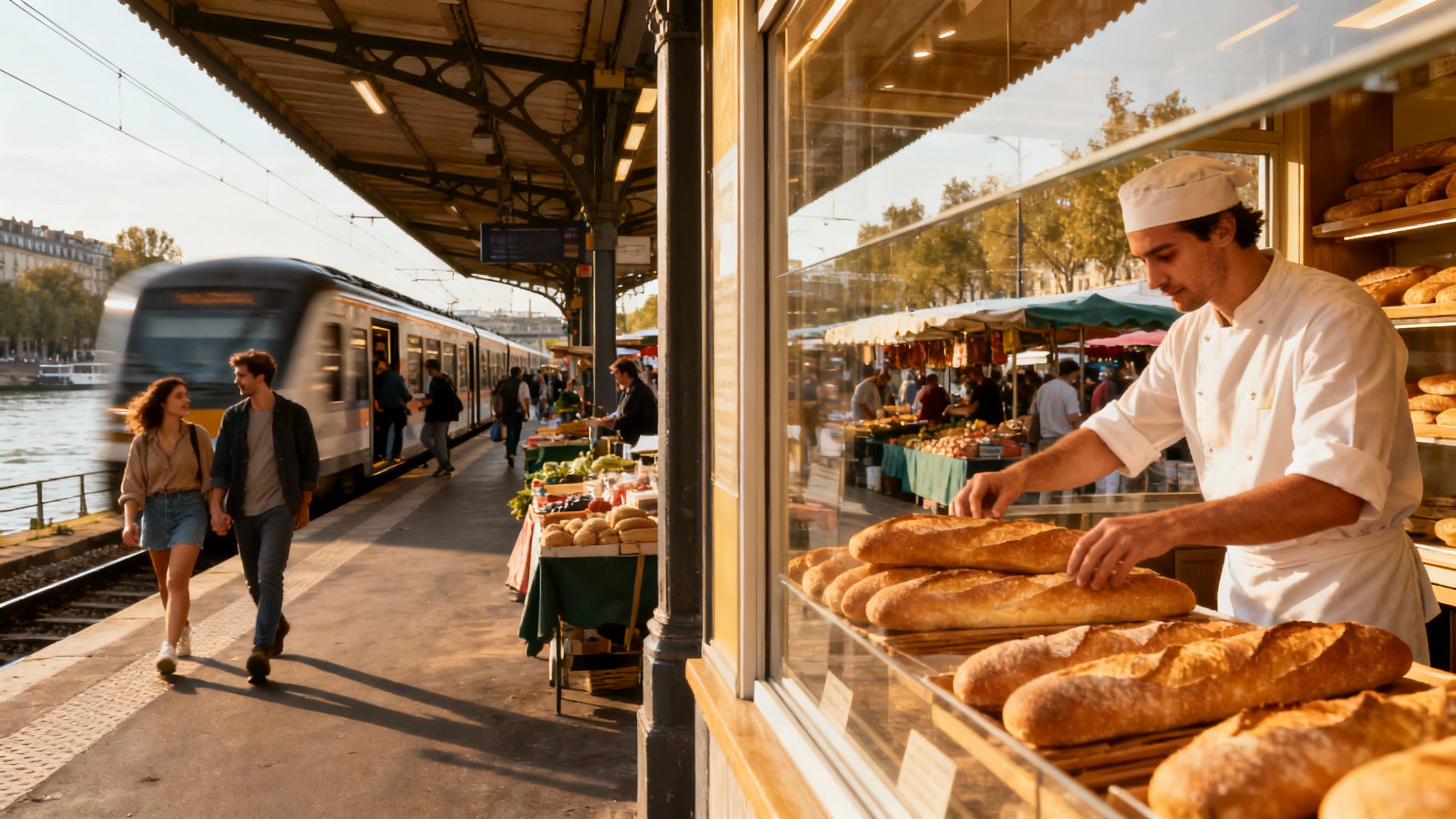France: Streets, Markets and the Reality Behind Rising Prices
France’s lifestyle is the reason to buy; Q1 2025 data show modest price recovery — match neighbourhood rhythms to market signals before you bid.
Imagine waking on a weekday in Lyon, buying warm fougasse at the Tuesday market on Rue de la République, then working from a sunlit apartment with a view of the Saône. This is not a postcard; it is how many international buyers describe daily life in France — rhythms set by cafés, neighbourhood markets and a measured pace that rewards long lunches and smart renovations. Yet the moment you fall for that life you need facts: how the market is moving, what neighbourhoods really offer and which practical compromises keep the dream from turning into regret.
Living the French life — street by street

France’s everyday life varies sharply between places. In provincial towns the week still pivots on marché day; coastal villages empty in winter and repopulate in summer; Parisian arrondissements have their own micro-economies. Recent data show national price momentum returning in early 2025, which matters for buyers who want lifestyle stability without unexpected price jumps. Use these signals to match the life you want to the price environment you can tolerate.
Neighbourhood spotlight: Grenoble to Biarritz — different winters, similar pleasures
Take Grenoble for mountain access and a tight-knit café culture, or Biarritz for surf, talc‑white sands and late‑night tapas that echo Basque kitchens. In both places weekdays are quieter, weekends are active, and local life is anchored by small businesses. Properties here trade on practical features — enclosed courtyards, shutters, storage — as much as on views. That combination defines both daily comfort and resale appeal.
Food, markets and small rituals that shape where you buy
Picture Saturday mornings at Marché des Capucins in Bordeaux or rue Mouffetard in Paris: neighbours choose cheese, kids weave between stalls, and the sense of community becomes a daily asset. That communal rhythm translates directly into what you value in a property — a kitchen big enough for market purchases, storage for seasonal produce, a balcony where you can dry herbs. These are the features local agents should prioritise when they tour properties with you.
- Lifestyle highlights to look for — concrete, not aspirational
- A covered market within a 10‑minute walk (food access, resale appeal)
- East‑ or south‑facing windows for winter light (reduces heating bills and lifts mood)
- Secure bike storage or nearby Vélo station (practical mobility in towns and cities)
- A local boulangerie with repeat customers (a small indicator of neighbourhood health)
Making the move: practical realities that preserve the lifestyle

Romantic impulses matter, but timing and process shape outcomes. National indices show a modest rebound in early 2025. That affects negotiation room, expected hold periods and rental potential if you plan to let. When agents present opportunities, ask for transaction volumes and quarter‑on‑quarter price movement for the specific commune — not just the department — so you understand short‑term momentum.
Property types and how they match real life
Stone village houses offer space and character but often need water, insulation and electrics upgrades. City apartments deliver convenience and rental demand but can lack storage and outdoor space. New builds promise lower maintenance but sometimes a thinner sense of place. Match type to your daily needs — morning market access, school runs, or commuter connections — rather than buying for an investment label alone.
Working with local experts who preserve your lifestyle
An agent who knows where the early‑morning boulangeries are is more useful than one who only quotes national yields. Look for agencies that can evidence recent, local sales and that arrange bilingual lawyers and surveyors. They should introduce you to local craftsmen and property managers who understand seasonal occupancy and neighbour expectations — critical for a smooth life once you move.
- Practical steps that blend lifestyle and transaction sense
- Inspect properties at the time of day you plan to live there (see light, noise and market activity).
- Request 12 months utility and neighbourhood noise records where available (practical, rarely offered).
- Have a local notaire and an independent surveyor attend a second viewing to flag structural or regulatory issues early.
- Budget for renovation quotes from local artisans before making a formal offer — factor this into your price ceiling.
Insider knowledge: what expats wish they'd known
Expats often say they underestimated seasonality and the small, local rules. Rental yields in 2025 average around 4.6% gross nationally, but that hides large local variation — Paris neighbourhoods can offer lower yields with higher liquidity, while provincial university towns and tourist hubs can produce stronger short‑term returns if managed correctly. Know which trade‑offs you accept: yield, lifestyle convenience, or capital stability.
Language, social rules and daily integration
Basic French opens doors. Locals appreciate effort; small acts — learning bakery opening hours, greeting neighbours in the stairwell — pay cultural dividends. Many expats will join local associations or market networks to integrate; these groups double as informal due‑diligence for neighbourhood reputation and small practical tips on tradespeople and services.
Longer view: how to keep the life sustainable
Think five years ahead. Will you want more space for a growing family, or less for city freedom? Are transport investments (new TER or tram lines) planned that will change commute times and prices? Confirm local planning rules before buying: permitted extensions differ by commune and can alter renovation potential and long‑term enjoyment.
- Common red flags expats report
- Absence of recent electrical or roof certificates (ask for diagnostics).
- Unclear co‑ownership (copropriété) charges and pending travaux (major works).
- Neighbourhood livability issues at the time of your preferred day (markets, garbage collection, night noise).
Conclusion: live the life you want, with the facts you need. Fall for a French street first; verify the transaction second. Use local indices and transaction counts, require current diagnostics, and work with agents who can translate market signals into neighbourhood realities. When a property matches both your daily rituals and a defensible price, you have a home — not just an asset.
Danish investment specialist who relocated to Costa del Sol in 2015. Focuses on data-driven market timing and long-term value for Danish buyers.


